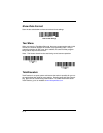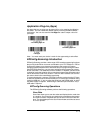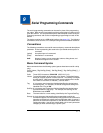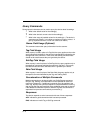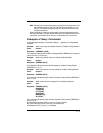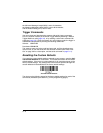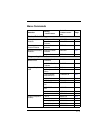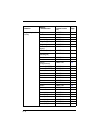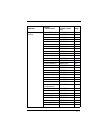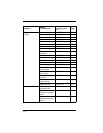
9 - 1
9
Serial Programming Commands
The serial programming commands can be used in place of the programming
bar codes. Both the serial commands and the programming bar codes will pro-
gram the scanner. For complete descriptions and examples of each serial pro-
gramming command, refer to the corresponding programming bar code in this
manual.
The device must be set to a USB serial interface (see page 2-2). The following
commands can be sent via a PC COM port using terminal emulation software.
Conventions
The following conventions are used for menu and query command descriptions:
parameter
A label representing the actual value you should send as part of a
command.
[
option
] An optional part of a command.
{Data} Alternatives in a command.
bold Names of menus, menu commands, buttons, dialog boxes, and
windows that appear on the screen.
Menu Command Syntax
Menu commands have the following syntax (spaces have been used for clarity
only):
Prefix [:Name:] Tag SubTag {Data} [, SubTag {Data}] [; Tag SubTag {Data}] […]
Storage
Prefix Three ASCII characters: SYN M CR (ASCII 22,77,13).
:Name: To send information to the scanner, use :Xenon: The default factory
setting for a Xenon scanner is Xenon scanner. This setting is changed
by using the BT_NAM command, which accepts alphanumeric values.
If the name is not known, a wildcard (*) can be used :*:.
Tag A 3 character case-insensitive field that identifies the desired menu
command group. For example, all RS232 configuration settings are
identified with a Tag of 232.
SubTag A 3 character case-insensitive field that identifies the desired menu
command within the tag group. For example, the SubTag for the
RS232 baud rate is BAD.
Data The new value for a menu setting, identified by the Tag and SubTag.
Storage A single character that specifies the storage table to which the
command is applied. An exclamation point (!) performs the command’s
operation on the device’s volatile menu configuration table. A period (.)
performs the command’s operation on the device’s non-volatile menu
configuration table. Use the non-volatile table only for semi-permanent
changes you want saved through a power cycle.








